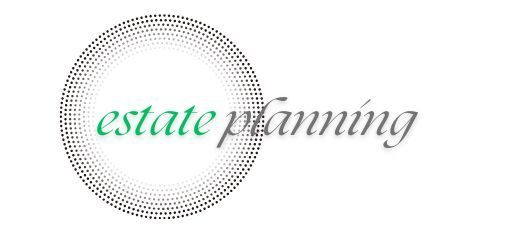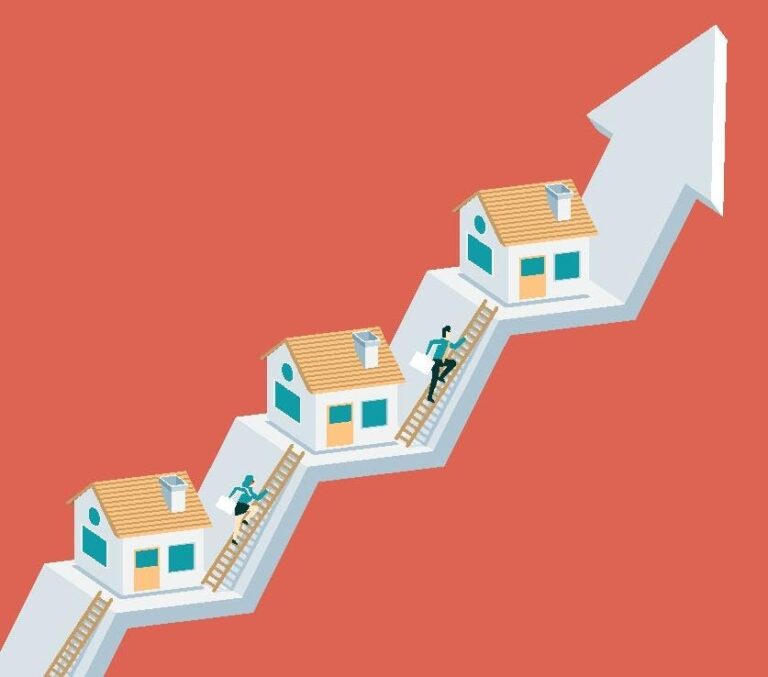
See How Today's Rates Compare
- UK inflation hits 8-month high, testing further rate cut chances
- Fed slows rate cuts as inflation persists
- Japan’s corporate service inflation rises, yen steady
- Asian Markets Track Wall St Rally As US Inflation Eases Rate Worries
- Jimmy Carter’s Complex Economic Legacy: High Inflation, But Effective, Hawkish Fed Under Volcker
Affiliate links for the products on this page are from partners that compensate us (see our advertiser disclosure with our list of partners for more details). However, our opinions are our own. See how we rate mortgages to write unbiased product reviews.
Bạn đang xem: See How Today’s Rates Compare
As rates go down, more people should be able to buy a home or refinance their current mortgage. See how home interest rates are trending today and where they might go in the future.
Today’s mortgage rates
Mortgage rates have increased over the last couple of months, and they’ve been holding relatively steady in recent weeks. In November 2024, 30-year mortgage rates averaged around 6.56%, according to Zillow data. Average 15-year mortgage rates were 5.92%. Both of these rates increased compared to the month before.
Fortunately, most major forecasts believe that mortgage rates will go down somewhat in 2025 as inflation slows and the Fed continues lowering the federal funds rate. But how much they drop depends on where the economy goes in the coming months.
Compare current mortgage rates today
See how mortgage rates are trending today.
Current mortgage rate trends
Comparison with previous years
See how mortgage rates have trended over the last five years, according to Freddie Mac data.
Throughout 2020, the average mortgage rate fell drastically due to the economic impact of the COVID-19 pandemic. Thirty-year fixed mortgage rates hit a historic low of 2.65% in January 2021, according to Freddie Mac. Rates began to rise again in 2022.
Most major forecasts expect rates to start dropping throughout the next few years, and they could end up closer to 6% by the end of next year.
Mortgage rates by state
Rates can vary depending on where you live. Check the latest rates in your state at the links below.
Alabama
Alaska
Arizona
Arkansas
California
Colorado
Connecticut
Delaware
Florida
Georgia
Hawaii
Idaho
Illinois
Indiana
Iowa
Kansas
Kentucky
Louisiana
Maine
Maryland
Massachusetts
Michigan
Minnesota
Mississippi
Missouri
Montana
Nebraska
Nevada
New Hampshire
New Jersey
New Mexico
New York
North Carolina
North Dakota
Ohio
Oklahoma
Oregon
Pennsylvania
Rhode Island
South Carolina
South Dakota
Tennessee
Texas
Utah
Vermont
Virginia
Washington
Washington, DC
West Virginia
Wisconsin
Wyoming
Rates by type of mortgage
Purchase mortgage
The rates you’ll get on a mortgage used to purchase a home are often better than what you’ll be quoted for a refinance. There are many different types of mortgages you can get, and all come with their own typical rates. A few of the most popular types include:
- 30-year mortgage rates: The most popular type of mortgage, this fixed-rate home loan makes for low monthly payments by spreading the amount over 30 years. Because the rate is fixed, your interest rate won’t change over the life of the loan. But 30-year mortgages have higher average rates compared to loans with shorter terms.
- 15-year mortgage rates: This is another fixed-rate loan, meaning your rate and payment will stay the same. It has higher monthly payments since payments are spread over a shorter period of time. However, it comes with lower rates than a 30-year loan.
- ARM rates: Adjustable-rate mortgages, or ARMs, start with a fixed rate for a period of time. After that, your rate can change once or twice a year. ARM rates are sometimes lower than fixed rates initially, but be aware that your rate, and thus your monthly payment, can go up over time as the rate adjusts.
- FHA interest rates: Because FHA loans are a type of government-backed mortgage, their rates are typically lower than regular mortgage rates, making them more affordable for many borrowers. They also allow down payments of just 3.5%. But you’ll need to pay FHA mortgage insurance for the life of the loan, which can be expensive compared to private mortgage insurance.
- VA mortgage rates: This is also a type of government-backed mortgage. VA interest rates are often as low as or lower than FHA rates. VA loans also require no down payment and no mortgage insurance. But you’ll need to be a military member or veteran to be eligible for one.
- Jumbo mortgage rates: If you need a mortgage that exceeds the conforming loan limit ($766,550 in 2024), you’ll have to get a jumbo loan. Jumbo mortgage rates vary by lender, but they may be comparable to conforming loan rates.
Mortgage refinance
Mortgage refinance rates typically differ somewhat from purchase rates, and may be slightly higher — particularly if you’re getting a cash-out refinance, since these are considered riskier.
If you’re considering a refinance, be sure to shop around with the best mortgage refinance lenders and get multiple rate quotes to be sure you’re getting the best deal.
- 30-year mortgage refinance rates: Refinancing into a 30-year term can lower your monthly payment since you’re spreading out what you owe over a longer period of time. But you’ll pay more in interest over the life of the loan.
- 15-year mortgage refinance rates: Refinancing into a shorter term like a 15-year mortgage will increase your monthly payment, but help you save on interest.
You can refinance into the same type of mortgage you have or a different type. For example, you can refinance from an ARM to another ARM, though many borrowers opt to refinance from an ARM to a fixed-rate mortgage when rates are down so they can lock in a low rate.
Refinancing from a government-backed mortgage into that same type of mortgage is called a streamline refinance. These come with a simpler process and don’t require an appraisal.
Home equity line of credit (HELOC) and home equity loans
HELOC rates and home equity loan rates are generally a little higher than rates on first mortgages, but they can still be worth it if you’re looking to tap into your home’s equity without having to take on a new rate on your main mortgage.
As with other types of mortgages, you’ll want to shop around and get multiple rate quotes to find the best HELOC lenders or home equity loan lenders.
Average mortgage rate by credit score
Data from credit scoring company FICO shows that the lower your credit score, the more you’ll pay in mortgage interest. Here’s the average interest rate by credit level for a 30-year fixed-rate mortgage of $300,000, as of October 2024:
According to FICO, only people with credit scores above 660 will truly see interest rates around the national average.
Mortgage rate outlook
Xem thêm : High Rates And Continued Inflation Mean Housing Prices Stay High
Inflation has slowed significantly in the last couple of years, and the Federal Reserve recently started cutting rates. This helped mortgage rates fall in September, but they’ve since ticked back up thanks to strong economic data. If the economy remains strong, we may not see rates drop as much as expected in 2025.
Expert forecasts and potential rate changes
Expert forecasts generally predict that mortgage rates will hold steady for the rest of 2024 and go down a bit in 2025. Fannie Mae’s latest forecast, for example, sees mortgage rates ending this year at 6.60% and falling to 6.30% by the end of 2025. The Mortgage Bankers Association’s outlook also has rates ending 2024 at 6.60% and then reaching 6.40% by the end 2025.
Ultimately, how much rates fall depends on the Fed and how the economy evolves in the coming months and years.
Current mortgage rates’ impact on home prices and inventory
High mortgage rates have kept home prices from rising too rapidly this year, and the pace of increases may slow next year. In October 2024, the median sales price for existing homes was $407,200, according to the National Association of Realtors, up 4% from a year ago.
The MBA predicts that home prices will be up 3.8% by the end of 2024 and 1.5% in 2025. Fannie Mae says they could end this year up 5.8% and increase 3.6% in 2025.
Falling mortgage rates often increase demand and put upward pressure on home prices. But as rates go down, homeowners who have been waiting for lower rates may be more willing to list their homes, increasing inventory. This should help prices from rising too quickly next year.
Impact of home interest rates on homebuyers and homeowners
How rates affect affordability and buying power
Your rate has a direct impact on how much house you can afford. Snagging a lower rate can enable you to borrow more money, boosting your homebuying power.
For example, say you can afford to spend $2,000 a month on your mortgage payment (not including taxes and insurance). With a rate of 7%, you could borrow around $300,000. But with a 4% rate, you could afford to borrow as much as $400,000.
Strategies for buying in varying rate environments
If you’re buying when rates are high, you’ll need to adjust your homebuying plans accordingly. You might need to lower your price range or make a larger down payment to achieve an affordable monthly payment.
You should also be careful about overspending in a low-rate environment. Though you may be able to borrow a larger amount with a low rate, make sure you aren’t stretching your budget too far. You don’t necessarily need to borrow the full amount the mortgage lender approves you for.
Ability to refinance
How current mortgage rates are trending doesn’t only impact people thinking about buying. If you own your home and pay a mortgage, you might want to see if you can save money by refinancing.
Deciding when to refinance your mortgage depends on both current rate trends and your own goals.
If mortgage rates today are lower than the rate on your mortgage, you could lower your monthly payment by refinancing. But refinancing costs money, so you’ll want to make sure your monthly savings make it worthwhile.
You can also refinance to take cash out of your home. This can be beneficial if you need to pay for a big home repair or upgrade. But if it means taking on a higher interest rate, it might not be worth it.
How are mortgage rates determined?
Multiple factors affect the interest rate you’ll pay on a mortgage. Some are outside your control. Others you can influence.
Individual factors influencing mortgage rates
Key determining factors that you do have control over include:
- Your credit score
- Debt-to-income ratio
- The amount of your down payment
- The type of mortgage you get
- The length of your term
The better your finances, the better the rate you’ll get. But remember that rates can also vary a lot depending on the type of mortgage you get. FHA rates are typically lower than conventional rates, for example. Or an ARM rate might be lower initially than a fixed rate, but you won’t have the security of knowing your rate won’t change over the years.
Rates also vary by lender, so be sure to comparison shop to ensure you get the best rate available (more on that further down).
Role of the economy and government policies
No matter how good your finances are, you won’t be able to get a rate that’s dramatically lower than average. Rates are determined in large part by economic trends and how those trends affect investor demand for mortgage-backed securities. Geopolitical trends or uncertainties can also cause mortgage rates to swing up or down.
When there’s a lot of economic growth, mortgage rates typically go up. In recent years, high inflation has pushed mortgage rates up. When growth is slower, rates often go down.
Federal Reserve policy can influence mortgage rates. When the Fed raises or lowers the federal funds rate, mortgage rates can move up or down as well based on how investors believe Fed changes will impact the broader economy.
Lately, mortgage rates have been very sensitive to inflation and labor market data. As this economic data has shifted market expectations around Fed rate cuts, mortgage rates have fluctuated.
How to get the best mortgage rate
Consider all your loan options
Mortgage rates vary among different loan types. Government-backed mortgages often have lower rates than conventional loans, though some also come with other fees that might offset some of the benefit of a lower rate (for example, the required upfront and annual mortgage insurance premium on FHA loans).
ARMs sometimes start out with lower rates than fixed-rate mortgages. This can be beneficial if you want to keep your monthly payment low and you plan to refinance or sell before the rate starts adjusting in a few years.
Compare mortgage rates
One of the best ways to score a good rate is to get approved with at least two or three different lenders and compare the rates they offer you. Rates can vary a lot by lender, and some mortgage lenders may be significantly more affordable than others.
Xem thêm : Russia Holds Interest Rates at 21% Amid Inflation
If you don’t want to do this work yourself, you might want to work with a mortgage broker, who can gather offers from many different lenders and help you compare loan options.
A mortgage calculator is a useful tool to see how different rates can impact your monthly payment. For example, on a $400,000 loan, a 6.70% rate results in a monthly payment of $2,581, while a 6.30% rate results in a monthly payment of $2,476 — a more than $100 difference.
Know the difference between your interest rate and APR
Once you have offers from a few different lenders, be sure to compare both the rates they’re offering as well as other costs associated with getting the loan. Many lenders charge origination fees, which you’ll pay at closing.
Your interest rate tells you how much you’ll pay to borrow the funds. The loan’s APR shows you the full cost of the loan, including your interest rate plus any fees, points, or other costs you’ll incur.
When comparing lenders, looking at both the interest rates and APRs you’re quoted can give you an idea of whether any lenders have low rates but high fees or vice versa. Ideally, you’ll want a lender that has both low rates and relatively low fees.
Check the loan estimate
When you apply for a mortgage, you’ll get a loan estimate that allows you to see the expected costs with a given lender. This is a detailed document that estimates how much your mortgage will cost, both up front and each month.
Comparing loan estimates from multiple lenders will give you a look at how much you could end up spending on both interest and closing costs. This is similar to comparing APRs, but much more in-depth.
Locking in the best rate
Once you’ve been approved for a mortgage, your lender may give you the option to lock in your rate. Since rates fluctuate every day, a rate lock ensures you keep your current rate and avoid increases before you close on your loan. However, if rates decrease after you lock your rate, you won’t be able to take advantage of it unless your lender offers a float down option.
Your loan officer can help you figure out when a good time to lock in your rate might be. Rate locks typically last between 30 and 90 days, though you may have the option to extend it if you need to (for a fee).
Buying down your rate
You can also get a better rate by paying for one. By purchasing mortgage points (also called discount points), you’ll lower your interest rate by a certain amount. A mortgage point costs 1% of the loan amount and lowers your rate by 0.25 percentage points.
You can also get a temporary buydown to lower your rate for a period of time. For example, a 2-1 buydown lowers your rate by two percentage points for the first year you have the loan, then by one percentage point for the second year. After that, the rate returns to normal.
The importance of credit scores and down payments
Your credit score and down payment can greatly affect the price you’ll pay to borrow a mortgage.
The higher your score is, the less you’ll pay to borrow money. Generally, 620 is the minimum credit score needed to buy a house, with some exceptions for government-backed loans. You’ll also need to make a down payment. Conventional loans require a minimum of 3% down, but putting down more can unlock a better rate.
If you’re having trouble getting a good rate, you might want to work on improving your credit or saving for a larger down payment and reapply later.
Consider other beneficial features
You should consider whether a lender has features that you find beneficial. Some lenders offer more flexibility for borrowers with lower credit scores or no credit history. Others may be a good option for first-time homebuyers, offering down payment assistance or affordable mortgage programs for these types of buyers.
Current mortgage rates FAQs
In November 2024, 30-year mortgage rates averaged 6.56%. But they’ve been higher than this recently.
If you need to buy a house, you might not want to or be able to wait until rates drop. There can be benefits to buying when rates are high. You can often get a better deal on a home, since you won’t be up against as much competition.
The better your credit score, the better the rate you’ll get on your mortgage. To access the best mortgage interest rates, aim to have a credit score at least in the 700s.
Mortgage rates are currently lower than they were a year ago.
To get a lower rate, you’ll want to have a great credit score, a large down payment, and a low debt-to-income ratio.
Nguồn: https://estateplanning.baby
Danh mục: News




